Come, Ye Disconsolate
Hymn Info ~ Authors ~ Composer

 There can be times in life that seem cold, dark and cheerless. As suggested by the pine tree in the picture, we can feel cold and alone. With everyone around us burdened by their own cares, there is no one to understand or care about us. The hymn " Come Ye Disconsolate" reminds us that God, our Heavenly Father, is always available to us through prayer, so we are not alone.
There can be times in life that seem cold, dark and cheerless. As suggested by the pine tree in the picture, we can feel cold and alone. With everyone around us burdened by their own cares, there is no one to understand or care about us. The hymn " Come Ye Disconsolate" reminds us that God, our Heavenly Father, is always available to us through prayer, so we are not alone.
The language of the current hymn text is similar to the King James Version of the Bible. The use of "Ye" in the English language was already less common when the King James Version was published in 1611. By 1816 when the hymn text is understood to have been written, "ye" was mainly used in theological works. Yet, the poetry of the antiquated language is particularly beautiful because, in addition to the meter and rhyme, it is uncommon and makes us think about the meaning.
The "mercy seat" mentioned in the first verse refers to the Biblical description of the gold cover the Israelite priests were instructed to put on the Ark of the Covenant in the Tabernacle. As recorded in Exodus Chapter 25, the Lord told Moses that He would speak to him from above the 'mercy seat,' and this term came to represent the Throne of God.
Other words in the hymn text are not currently in everyday use. To give the modern reader a clearer understanding, the text of the first verse could be rephrased as, "Come, all of you who are without comfort, dejected or cheerless (Come, ye disconsolate), from wherever you have gone in a state of dispirited feebleness (where'er ye languish); come before your Heavenly Father, as did Moses before the ark of the covenant in the Tabernacle (Come to the mercy seat), and kneel down with deep sincere emotion (fervently kneel.) Bring your wounded hearts and tell your Father in Heaven of your extreme distress (here tell your anguish), for there is no sorrow you can experience on earth that Heaven cannot heal. "
The tone of the second verse changes from a description of those invited, to a description of the one who is giving the invitation. There are many biblical references in the hymn text, which identify this Heavenly Healer as the Savior, Jesus Christ. In the New Testament, John records the words of the Savior as He tells his disciples of two comforters: "I will not leave you comfortless: I will come to you… And I will pray to the Father, and he shall give you another Comforter, that he may abide with you for ever; even the Spirit of truth…"
From these scriptural verses, it is apparent that the preeminent comforter is the Savior, and He is the intended Comforter mentioned by the author of the current text. Other attributes poetically enumerated in the hymn text point to the Savior, who is "the Light of the World" (John 8:12). Another word for 'fadeless' is 'everlasting,' and He is the "Everlasting Father" (Isaiah 9:6).
In the third verse, we recognize more references to the Savior from Biblical accounts, such as "Bread of Life" (John 6:35), and "…a pure river of water of life… proceeding out of the throne of God…" (Revelation 22:1).
The closing phrase refers to prayer as a "feast of love", which may be a novel idea to some, but as the scripture says, "God is love" (1 John 4:8). Therefore, when in communication with Him we could not but feel or partake of His love.
The ending of every verse proclaims that Heaven can 'heal', 'cure', or 'remove' all our sorrows. We may ask, "How is that possible?" Many good people live out their lives with incurable diseases or suffer the effects of tragedy. While Heaven may not remove all the causes of sorrow, hope provided by Heaven, and power available through the Savior, can remove the feeling of sorrow. We can say as Paul in the New Testament, "I can do all things through Christ which strengtheneth me."
The text sung today in many American hymnals is actually the combined work of two different authors, one an Irish Catholic, the other an American Protestant. The original three verses were written by the Irish poet Thomas Moore and published in London, England in his 1816 collection, " Sacred Songs." See image below from, " The Poetical Works of Thomas Moore, Reprinted from the Early Editions." (Digitized by Google.)
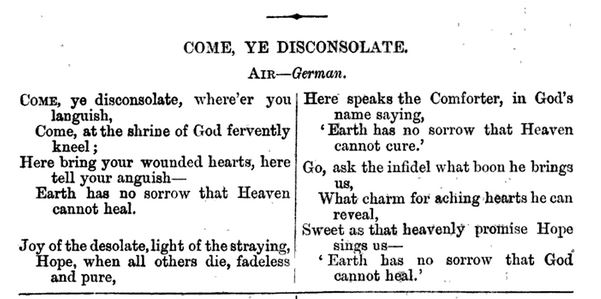
In 1832, sixteen years later, Thomas Hastings and Lowell Mason published their collection " Spiritual Songs for Social Worship," in Utica, New York. It was intended for families and smaller groups. The volume contained a revised version of " Come, Ye Disconsolate" with an entirely different third verse, which is credited to Thomas Hastings. This verse has a more positive tone of encouragement than the original. The text was set to a hymn tune by Samuel Webbe written many years earlier.
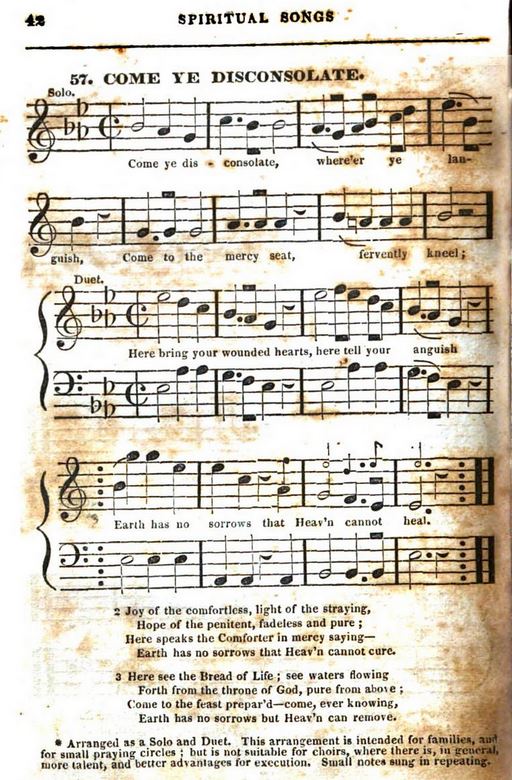
The Irish poet, Thomas Moore, wrote mostly secular works, his sacred songs were a very small proportion of his writings. On the other hand, the American hymnist and composer, Thomas Hastings, devoted his life to sacred music. In the preface to the above publication, it states an intention to elevate the standard of sacred music. It is thought that Thomas Hastings based his version of " Come, Ye Disconsolate" on the original text by Thomas Moore, and is responsible for the changes in the first two verses as well as the additional verse. These changes bring more references that are biblical into the text and were likely done as part of this effort of improvement.
" Come, Ye Disconsolate" appeared in the 1948 Edition of " Hymns, The Church of Jesus Christ of Latter-day Saints," (LDS Hymnal) with a few minor changes to Thomas Hastings' text. The current 1985 LDS Hymnal version is essentially unchanged from the previous.
The hymn continues to comfort and remind us why we love the Lord and why we should pray.

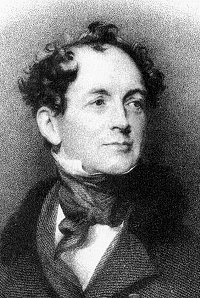 Thomas Moore was born to John and Anastasia Moore in May of 1779 at Dublin, Ireland. His father has been referred to by different sources as a tradesman, a grocer and a wine merchant. He could have been all of these, and the family evidently lived above the shop where he had a business. This is where Thomas is understood to have been born. (It was only after 1900 that babies were born in hospitals.) Dublin, as the capital city of Ireland and a port city on the east coast, would have been a good place for merchants to do business.
Thomas Moore was born to John and Anastasia Moore in May of 1779 at Dublin, Ireland. His father has been referred to by different sources as a tradesman, a grocer and a wine merchant. He could have been all of these, and the family evidently lived above the shop where he had a business. This is where Thomas is understood to have been born. (It was only after 1900 that babies were born in hospitals.) Dublin, as the capital city of Ireland and a port city on the east coast, would have been a good place for merchants to do business.
It is believed that Thomas was the oldest child; two younger sisters eventually came to the family. Thomas grew up in Dublin and attended several schools, including an English grammar school. (Ireland had been under British rule since 1603.) Thomas is said to have shown an early interest in music and the performing arts. His mother had different ideas, however, and it is understood that she wished for him to become a lawyer (or barrister). The family was Catholic, and Catholicism was illegal in Britain from 1559 to 1791. Although they were more widely accepted in the eighteenth century, Catholics had limited rights until 1829. Thomas grew up during difficult times, with the Irish Rebellion and French invasion occurring in 1789.
In 1592, Queen Elizabeth I founded the Protestant based Trinity College at Dublin, modeled after Oxford and Cambridge Universities in England. Catholics were generally excluded from attendance at Universities in the British Empire during the time mentioned above. Fortunately, in 1793, Trinity College (also known as University of Dublin) began accepting Catholics, and Thomas was enrolled there. He intended to begin fulfillment of his mother's wishes of becoming a barrister, reportedly graduating in 1795, at the age of 16. Thomas picked up his studies again and went to London in 1799 to study law at Middle Temple, one of the English colleges for barristers.
In London, Thomas found that his gifts in the literary and performing arts brought him much more acclaim than his efforts at law. He adopted the pseudonym 'Anacreon,' which he occasionally used, and his first book of poetry was published in 1800. He became well known as a poet, and his works became very popular. He also found success as an actor, balladeer and singer. He became a figure in society, enjoying the patronage of the Irish aristocrat, Lord Moira, and the friendship of the poet, Lord Byron. He was politically active and an advocate for Catholic emancipation.
Interestingly, while at Trinity College preparing to become a lawyer, Thomas was introduced by a classmate to a volume of ancient Irish music. This is said to have become the basis of his publication of several volumes of "Irish Melodies."Thomas wrote lyrics to the classic Irish tunes, which were arranged by Sir John Stevenson. These volumes were published between 1808 and 1834 and are what he is most remembered for. His volume of Sacred Songs was also written during this time, published in 1816, in which " Come, Ye Disconsolate" is found. A number of his poems have been set to music by well-known composers. He was a prolific writer and in addition to poetry, published operas, satires, novels and a biography.
In 1811, at the age of 32, Thomas married Elizabeth Dyke. She was an actress he had met while performing. She was poor and a Protestant but they were said to have been happy together. Is it reported that they had five children. Later in life, he and Elizabeth moved south to a cottage at Bromham, Wiltshire, England, where he continued writing. He was so well regarded that it is said he was at one time invited to stand for Parliament, although he did not, and received a state pension.
Tragically, all of the children preceded him in death, at various ages. A stroke left him unable to perform and his last years were spent being cared for by Elizabeth, passing away in February of 1852 at Bromham. His remains were interred at the St. Nicholas Churchyard, within view of his cottage. He has not been forgotten by the Irish, however, several monuments to his memory still exist.
Come, Ye Disconsolate
Text as found in the 1985 LDS Hymnal
Come, ye disconsolate, where'er ye languish;
Come to the mercy seat, fervently kneel.
Here bring your wounded hearts; here tell your anguish.
Earth has no sorrow that heav'n cannot heal
Joy of the desolate, Light of the straying,
Hope of the penitent, fadeless and pure!
Here speaks the Comforter, tenderly saying,
"Earth has no sorrow that heav'n cannot cure."
Here see the Bread of Life; see waters flowing
Forth from the throne of God, pure from above.
Come to the feast of love; come, ever knowing
Earth has no sorrow but heav'n can remove.

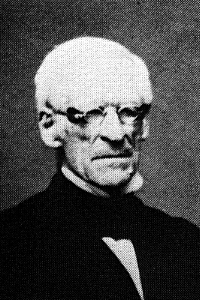
Thomas Hastings was born at Washington, Connecticut, in October of 1784, the third of eleven children. His father, Dr. Seth Hastings, moved the family to Clinton, New York in 1786.
Clinton today is a small town about nine miles southwest of Utica. In 1786, it was a frontier village and it is said that young Thomas had few opportunities for formal education. His talent and taste for music became apparent at an early age, however, and by the age of twenty-two he was teaching music.
He married Mary Seymour of Buffalo. In 1817, it is said he went to Troy to pursue better opportunities, then to Albany and Utica. It is reported that he was a prominent member of the Presbyterian Church and while in Utica spent nine years as editor of a religious weekly journal, in which he was able to put forward his views on church music.
In 1832, it is said that he was called to New York to take charge of several church choirs, and he spent his remaining years there. In 1858, it is reported that the University of the City of New York (now known as New York University) awarded him the honorary degree of Doctor of Music, believed to be one of the first such awarded.
Thomas Hastings is said to have believed that better musical worship gave greater glory to God and worked diligently training choirs, writing and composing, compiling and publishing.
His known hymn texts today are reported to number about 180 and his hymn tunes number over 40, including the tune for “Rock of Ages.” Some biographers claim that he wrote texts for about six hundred hymns and composed a thousand tunes over his lifetime. He published a number of collections, one of which was said to be in collaboration with Lowell Mason. His contributions to sacred music are even more remarkable in light of his having been born an albino with resulting vision difficulties.
Thomas Hastings concluded his life’s work at New York in May of 1872, at the age of 88.

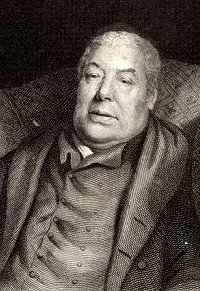 Samuel Webbe, Sr., was born in October of 1740 in England. His father is said to have been a government officer who died that same year at Minorca, Spain. Some sources state that Samuel was born at Minorca. His mother was left in reduced circumstances and could not provide other opportunities for his future, so when he was eleven, Samuel was apprenticed to a cabinetmaker. Apprenticeship was a widespread method of preparing youths for their life's work at that time, and for ensuring the perpetuation of the trades. It was usually a binding written agreement between the parents and the master in which a sum was paid to the master for taking the apprentice.
Samuel Webbe, Sr., was born in October of 1740 in England. His father is said to have been a government officer who died that same year at Minorca, Spain. Some sources state that Samuel was born at Minorca. His mother was left in reduced circumstances and could not provide other opportunities for his future, so when he was eleven, Samuel was apprenticed to a cabinetmaker. Apprenticeship was a widespread method of preparing youths for their life's work at that time, and for ensuring the perpetuation of the trades. It was usually a binding written agreement between the parents and the master in which a sum was paid to the master for taking the apprentice.
The apprenticeship was a seven-year contract, but when he was released at the age of eighteen, Samuel had desires for education and a different life. His mother had passed away and he was on his own. He studied languages and worked as a music copyist to support himself. Although music publishing began shortly after the Gutenberg Bible in the fifteenth century, during Samuel's time, the hand-set type process was still time consuming and expensive. When a few copies of music were needed for a choir or musicians, they were written out by hand.
Samuel's work brought him into acquaintance with a musician named Barbandt, who offered him music lessons. It is reported that he soon adopted music as his profession. In 1766, at the age of twenty-six, he received his first prize medal from the 'Catch Club.'
A "catch" is a musical form similar to a 'round' where several voices sing the same melody at different times. The lyrics were typically secular and 'catches' were very popular in eighteenth century England. The 'Catch Club' was a gentleman's singing club in England, and prizes were offered to bring in new music. Samuel was a member of the club from 1771 to 1816, serving as secretary for a time beginning in 1794. This club was a venue for development of his talent and he went on to win twenty-six more prizes.
A "glee" is a song having different voice parts with several varied, short movements, and sung without accompaniment. Glees were also very popular in England at the time, and when the 'Glee Club' was formed in 1787, Samuel is said to have become the group's Librarian.
Samuel's compositions of catches, glees, canons and part-songs were numerous, estimated at about three hundred. These became his best-known works. He also wrote sacred motets, masses and hymns. One of these compositions was the tune CONSOLATOR, published in a 1792 collection, to which Thomas Hastings would set the text of " Come, Ye Disconsolate" forty years later.
Samuel became a skilled organist and served at various Chapels, playing and teaching music. It is noted that he served at the Chapels of the Sardinian Embassy and the Spanish Embassy, which suggests that his father's government service connections may not have been forgotten. It is interesting to note that Samuel's lifetime spanned the years of the American Revolution, which is likely to have been of interest in the embassies of the time.
It is surmised that Samuel married and had a family. Little is known of his family life, except that he had a son, Samuel, Jr., who followed in his musical footsteps, and succeeded him as organist of the Spanish Embassy for a time. They collaborated on a collection of Psalm tunes, which they published in 1800.
At the age of seventy-five, Samuel Webbe passed away in March of 1816 at London, England, and his remains were laid to rest at the St. Pancras churchyard. The popular music of his time has been supplanted by other styles, but sacred hymns are as timeless as their messages, and we enjoy this part of his legacy today in the music sung to " Come, Ye Disconsolate."

Information in this article came from:
' Hymns of the Church of Jesus Christ of Latter-day Saints, (Deseret Book Company, Salt Lake City, Utah, 1985, #115)
' Holy Bible, King James Version,' Exodus 25:17-22, pp. 117-118; Isaiah 9:6, p. 873; Psalms 30:5, p. 731; John 8:12, 14:16, 18, p. 1353; 1 John 4:8, p. 1559. (The Church of Jesus Christ of Latter-day Saints, Salt Lake City, Utah, 1979)
Webster’s New Collegiate Dictionary, (G & C Merriam Company, Springfield, Massachusetts, 1975)
Karen Lynn Davidson, ' Our Latter-day Hymns,' pp. 142, 387, 414, 455-56. (Deseret Book Company, Salt Lake City, Utah, 1988)
J. Spencer Cornwall, ' Stories of our Mormon Hymns,' p. 25. (Deseret Book Company, Salt Lake City, Utah, 1963)
http://www.hymntime.com/tch/htm/c/y/d/cydiscon.htm (accessed January 7, 2018)
http://www.hymntime.com/tch/bio/m/o/o/moore_t.htm (accessed January 7, 2018)
http://www.hymntime.com/tch/bio/w/e/b/webbe_s.htm (accessed January 7, 2018)
http://www.thehistoryofenglish.com/history_early_modern.html. (accessed January 7, 2018)
https://en.wikipedia.org/wiki/Thomas_Moore (accessed January 7, 2018)
https://hymnary.org/person/Moore_T?sort=desc&order=Texts+by+Thomas+Moore+%2848%29 (accessed February 25, 2018)
https://books.google.com/books?id=a2xPAAAAcAAJ&pg=PA320&lpg=PA320&dq=thomas+moore+sacred+songs+1816&source=bl&ots=-xg0lrBSq-&sig=ATtM22hHU0jq3Ivuazi4MEyPPGs&hl=en&sa=X&ved=0ahUKEwiTipvf4o3ZAhUK8YMKHSbZCdsQ6AEIVjAJ#v=snippet&q=disonsolate&f=false (accessed February 25, 2018)
https://books.google.com/books?id=zf1NAQAAMAAJ&printsec=frontcover&dq=Thomas+Hastings+Spiritual+Songs+for+Social+Worship+1832&hl=en&sa=X&ved=0ahUKEwjbu_zi643ZAhVmxoMKHaxbBhsQ6AEIJzAA#v=snippet&q=disconsolate&f=false (accessed February 25, 2018)
https://www.google.com/maps/place/Dublin,+Ireland/@54.6467264,-8.7803581,7z/data=!4m5!3m4!1s0x48670e80ea27ac2f:0xa00c7a9973171a0!8m2!3d53.3498053!4d-6.2603097?hl=en (accessed February 25, 2018)
https://midwiferytoday.com/web-article/history-midwifery-childbirth-america-time-line/ (accessed February 25, 2018)
http://www.great-britain.co.uk/history/ireland.htm (accessed February 25, 2018)
https://en.wikipedia.org/wiki/Trinity_College,_Dublin (accessed February 25, 2018)
https://en.wikipedia.org/wiki/Middle_Temple (accessed February 25, 2018)
https://ia800301.us.archive.org/10/items/dictionaryofnati60stepuoft/dictionaryofnati60stepuoft.pdf (accessed February 25, 2018)
https://en.wikipedia.org/wiki/Apprenticeship (accessed February 25, 2018)
https://en.wikipedia.org/wiki/History_of_music_publishing (accessed February 25, 2018)
https://en.wikipedia.org/wiki/Catch_%28music%29 (accessed February 25, 2018)
https://en.wikipedia.org/wiki/Glee_%28music%29 (accessed February 25, 2018)